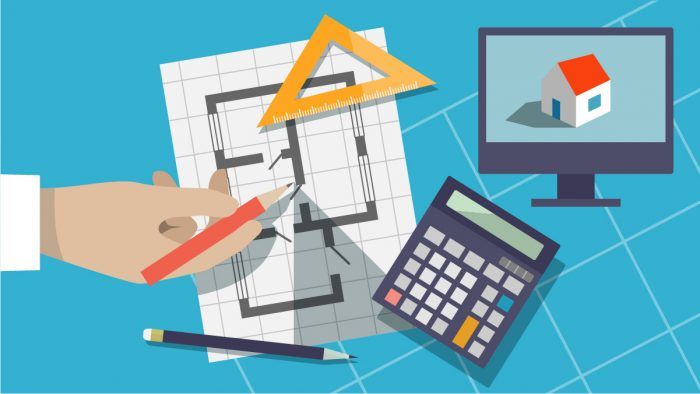Gross Profit Margin for Building Projects
As an operations manager for a construction company, Ian Schwandt defines what gross profit margin is and why it's important, and gives a helpful breakdown.

In The Anatomy of a Building Project’s Price, I outlined how an estimator looks at the first three of a project’s four basic parts:
- Self-performed labor costs
- Material costs for self-performed labor
- Trade partner costs (any work that is subcontracted out to a specialist contractor)
- Gross margin, which encompasses profit and overhead
Why gross margin matters
Calculating the fourth part, gross margin, is the make-or-break part of the project price equation on a macroeconomic-total, business-financials level. A mistake at this level, like an oversight on self-performed labor and materials, can tank a job and eat into the budgeted gross profit. Enough projects with diminished gross profit over the course of a year can do serious damage to a business’s bottom line, but miscalculating how you are applying gross profit across all your projects can make a business quickly insolvent.
What is gross margin?
In its simplest terms, gross margin is the amount of money added to the cost of producing a project (such as labor and materials) and encompasses 1) the overhead costs of operating the business and 2) the desired profit.
The overhead costs for a construction company are the expenses related to the operation of the company that would occur throughout the course of a month or year that are not the result of performing a specific, sold project. Office and shop rent, liability insurances, utilities, admin staff, and owner’s salary are examples of overhead that would be familiar to all business owners regardless of company size. In accountant speak, these are the below-the-line costs on your profit and loss (P&L) statement. Above-the-line costs would include your cost of goods sold (COGS) like the labor, materials, and trade partners that perform your projects.
Gross Margin = Revenue – COGS/Revenue
Profit, or net profit, is the money left over at the end of the year after the project COGS and overhead are paid for. Many construction trade and peer groups advocate that owners shoot for 10% net profit which can be stockpiled for slow times, used for expansion in boom times, or invested.
Methodologies for applying gross margin range from very simple blanket percentages to complex formulas that take many factors into account. Many trade consultants push for contractors to use a flat percentage added to the project COGS. In residential design-build remodeling, this percentage is typically 30% to 40% and can be dialed in using your P&L, your average COGS, and your desired net-profit percentage. Consultants push for this net-profit percentage to be 10%, though many successful companies operate in the 5% to 8% range.
Here is a breakdown of how the math works out for a $100k project:
- $21,000 self-performed labor cost @ 30% of COGS average
- $14,000 material cost @ 20% of COGS average
- $35,000 trade partner cost @ 50% of COGS average
- $30,000 gross profit @ 30% gross profit margin
- $100,000 selling price to client ($70,000 COGS divided by 70%)
When using the standard consultant methodology, the $30,000 gross profit breaks down like this:
- $22,000 assigned to overhead and $8,000 budgeted net profit @ 8% net profit margin
This methodology for assigning gross margin is used with a high degree of success by many construction contractors, especially those within the residential remodeling sector. This simple formula of 30/20/50 COGS divided by 70% can be used by DIYers and small contractors alike to ballpark the cost of a future hypothetical small project. Of course, the final costs can only be understood once all the factors of the project have been quantified, but knowing this simplified equation behind the anatomy of a project’s price can save time and help clients make better decisions early on in the process.
RELATED STORIES























View Comments
I have no accounting skills and I am trying to budget an addition. This is great information to bring order to the process and understand where builders are coming from.
Thank you! I am happy to hear that you found it useful.
Ian
Hello Ian - Did you mean to have the equation for the gross margin to be the following:
Gross Margin = (Revenue - COGS) / Revenue
Thanks for the information.
Yes that is correct. COGS should be subtracted from Revenue first before dividing again by revenue to get the percentage.
Ian-
In the future I hope you can discuss the owner’s salary and what % of gross that might be.
The desired 10% net profit would ideally be after the owner’s salary has been accounted for, correct?
I have found that over the years that 5-8% net after my salary is typical and is something that I have banked (as opposed to buying a new truck or a boat!) because when the economy has gotten bad that 5-8% net in the bank from previous years is what paid my salary and kept things going when there was barely enough net profit to make it worth staying in business.
You are correct. Typically the owner's compensation is factored in as part of the below the line overhead cost and the net profit is after the owner has been paid.
Your point about new trucks and boats is a good one. I think new truck disease has led to the death of more than it's fair share of construction businesses.